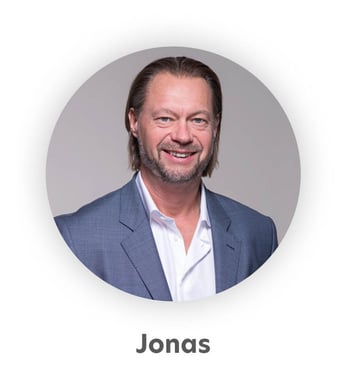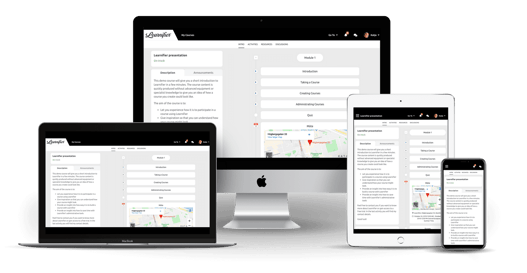Adviser Partner helps companies increase their sales and growth. For 20 years, they have trained over 3000 companies and over 40,000 salespeople and sales managers. Still, they are far from being a "training company". What they sell are results like better sales results and growth - where training is one of the important parts.
Jonas Olofsson, CEO and Co-founder of Adviser Partner, is both strategic and operational in the course content creation. Here, he shares his best tips on how to create trainings that give results – both in the short and long term.

Hi Jonas! Tell us about your role at Adviser Partner.
- I am the CEO and Founder of Adviser Partner. Being the CEO requires giving speeches at the Christmas party. Jokes aside, I basically do the same things as everyone else in the company. I sell and deliver what we sell. In addition, I also work with producing all the material we use in our trainings and processes. And I ensure that we all work with the same material.
What is the best part about your job?
- It is to deliver on our customer promise. We really have a great job.
What is the biggest challenge?
- Finding time to meet demand. The market is lavish. After 20 years, we have still only scratched the surface.
You work with a learning platform to share knowledge.
Who are you conveying knowledge to and why?
- We have three different target groups:
Sales managers is the primary one.
The second group is salespeople.
And then we have a third category of so-called "non-salespeople" who are not formally salespeople but still need an understanding of sales. It can be, for example, IT consultants.
Which are your key markets?
- We have our office in Sweden but work globally. Recently for example we have done workshops via Teams for groups in the USA, South Africa and China.
What are your current courses?
- We have sales training and sales manager training.
Some courses are generic while others are specially designed. The latter means we adapt the material to the specific company’s brand and use their own people in the clips, etc.
Previously, the training was only in our own Learnifier platform to which we invited our customers. Today, many customers use Learnifier's platform themselves and want to create learning journeys there, so then our training material is placed there for them where they can easily adapt it. Learnifier has become an important part of creating longevity in our customer relationships and the results they get.
“Good trainings have three elements: theory, practical work like exercises and then verification and knowledge control. True whether it happens physically, mixed or completely digital.”
How was this knowledge conveyed before you had Learnifier?
Tell us about the digital journey – why did you need a learning platform to begin with?
- We started making digital educational films in 2016. To gather and get the films out in a good way, we acquired our learning platform. Since then, we have added more and more content and developed our online offering.
How do you work with learning today?
- Most of our trainings are physical. But it can be difficult to carry out physical training with, for example, store staff. A lot of people come in and are new at work and staff turnover can be big, and it’s a challenge to have everyone attend trainings at the same time. For us, the digital elements are a good complement to the physical trainings, rather than the other way around.
How did you create your courses? What do the process and production look like?
Who has been involved and why?
- We write the texts and scripts ourselves. Our material is our DNA – what we sell.
We also take help from a company that produces films and other things for us as quality is very important to us in everything we do.
What are your main tips and insights from your journey of creating online trainings?
Here are a few tips:
- The films are not the main thing! What’s most important is the exercises after the films. Watching film clips often makes no difference if the knowledge isn’t instantly applied.
- Keep the films short, no longer than three minutes. Otherwise there will be too much information.
- Engage the managers. For example, it’s good if the managers do exercises together with the employees. If behavioral changes are to take place, leaders must be involved and follow up. If the sales teams have learned things digitally, we recommend that the management follow up with joint exercises with the teams.
- Good trainings have three elements: theory, practical work as exercises and verification and knowledge control. Whether it happens physically, mixed or completely digital.
What makes a training good in your opinion? How do you measure it?
- That’s easy – when our clients increase their growth and sales.
What’s next? What do you want to do and why?
- We will continue to develop our digital programs. We will probably also film more of our written material. And we will definitely sell more custom trainings to companies that want us to produce for them. It feels like we have a lot we can and want to do.
The possibilities are many.
Interview by: Rebecca Cannerfelt
_______________
Experience the learning platform that Adviser Partner uses to create and administer their trainings!
Over 300 companies and organizations of all sizes work with Learnifier to train and develop their people.
Read more, book a personal run-through or try our platform for free

.png?width=153&height=58&name=Learnifier%20TextLogo%20NearBlack%20-%20PNG%20MEDIUM%20-%20800px%20(2).png)





